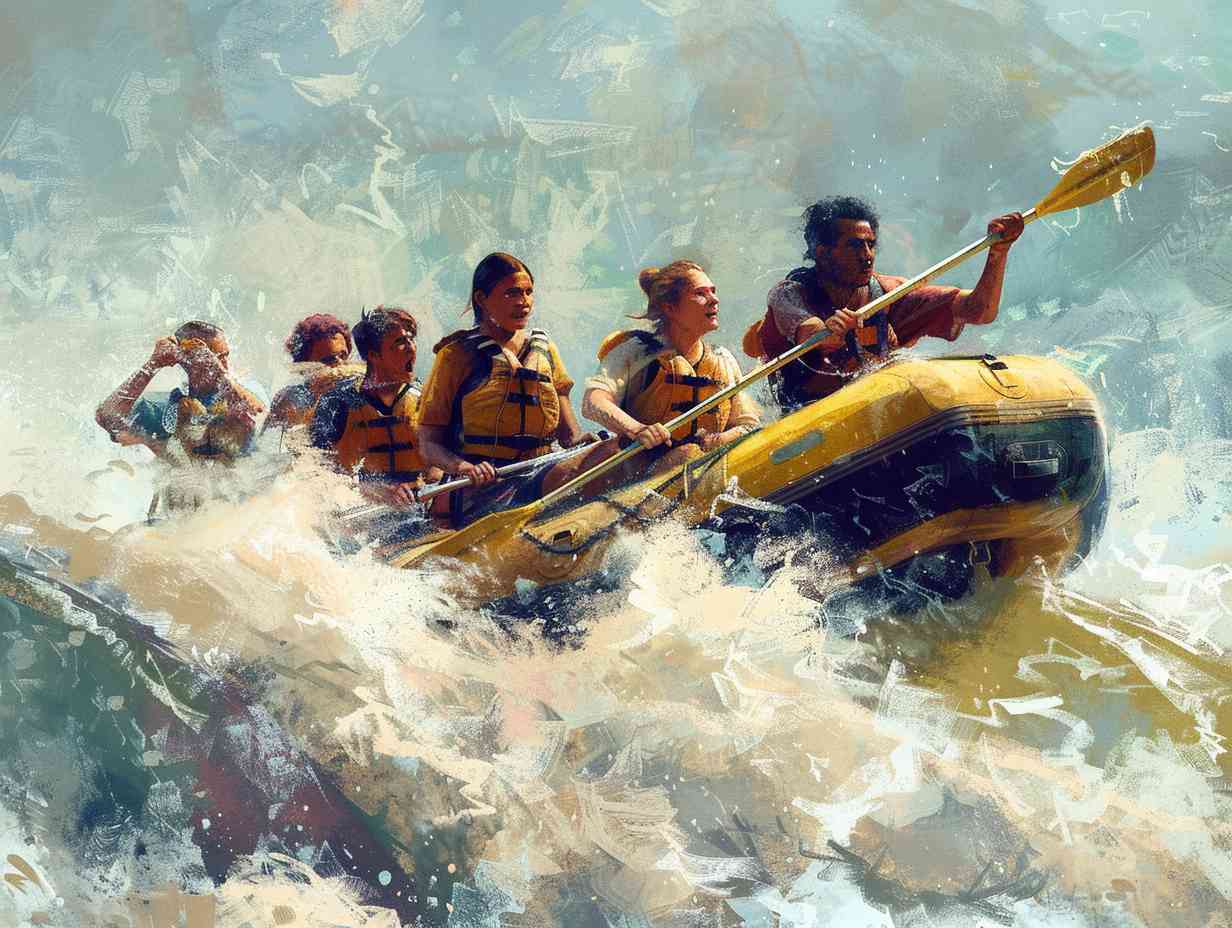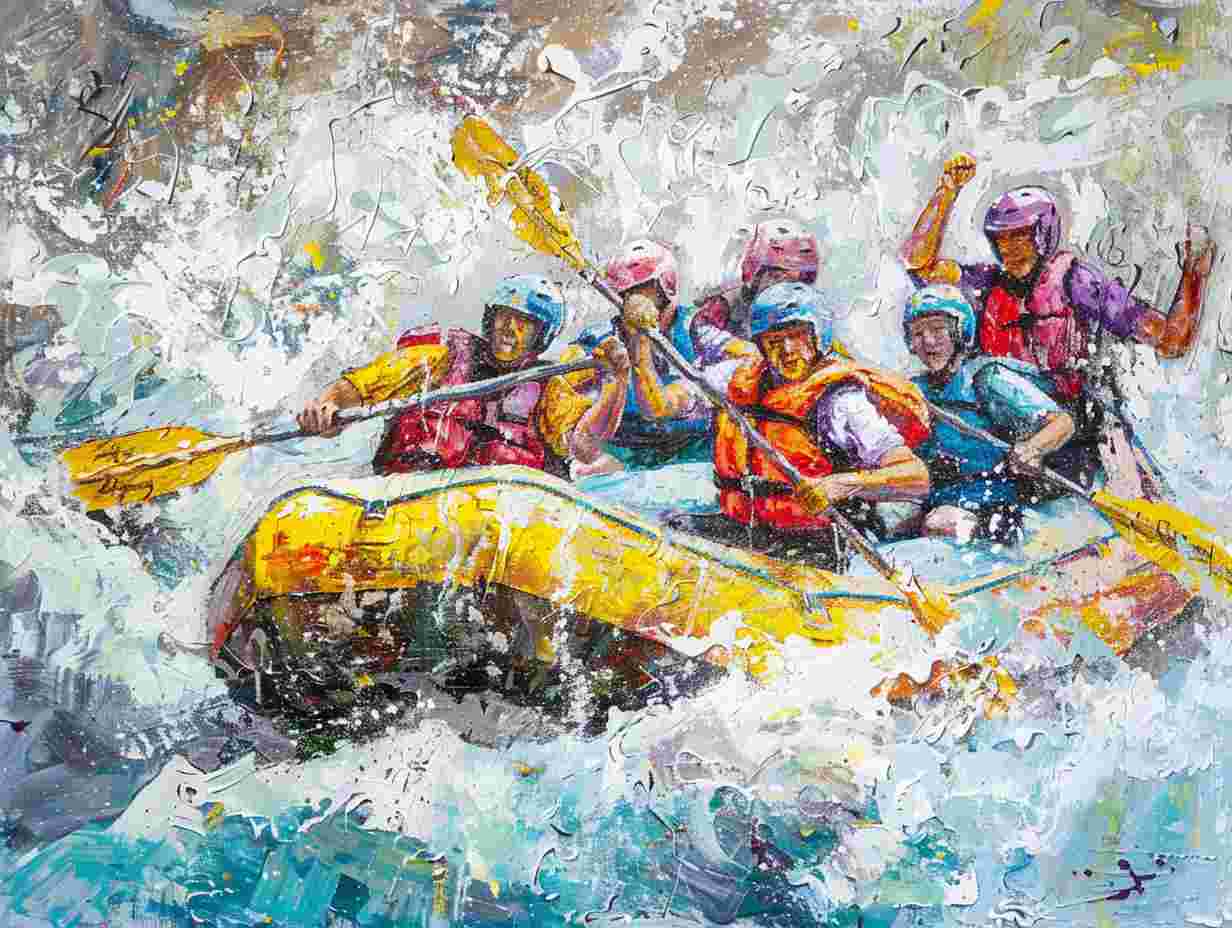
Rafting Camp Basics
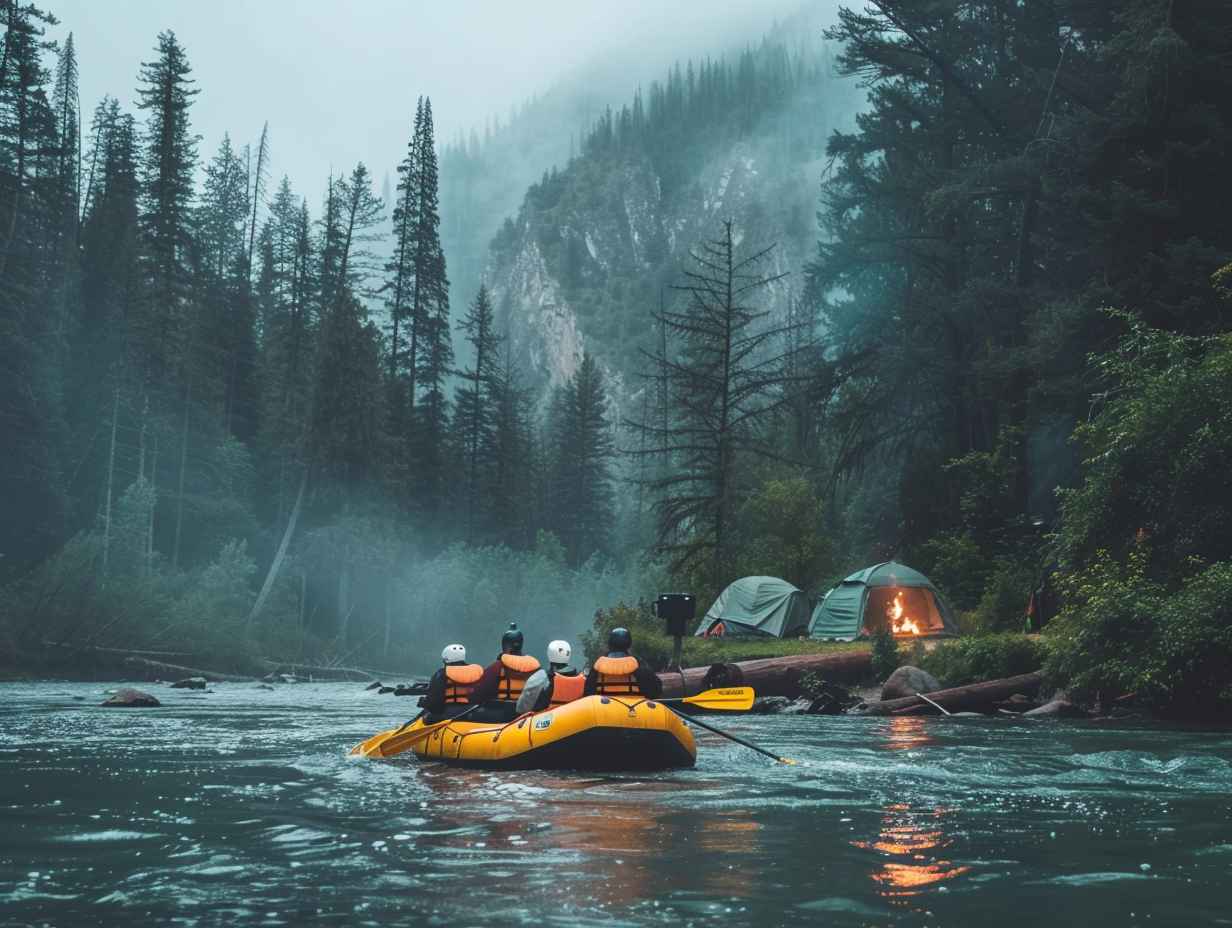
When starting on a rafting adventure, you may find yourself torn between the thrill of the rushing rapids and the need for safety and preparation. Traveling the waters requires more than just a sturdy raft; it demands a keen understanding of essential gear, river dynamics, and proper campsite etiquette.
As you prepare to begin on your rafting camp journey, remember that being well-equipped and informed can make all the difference between a memorable experience and a potential mishap.
Key Takeaways
- Essential gear includes a helmet, PFD, water shoes, and sun protection for safety and comfort.
- Choose rapids based on experience levels, ranging from Class I to V for varying challenges.
- Follow safety tips like wearing a life jacket, staying seated, and hydrating to ensure a safe rafting experience.
- Practice campsite etiquette, set up tents properly, and follow emergency protocols for a successful rafting camp.
Essential Gear for Rafting Camp
When preparing for a rafting camp, make sure you have the essential gear to stay safe and comfortable on the water.
Start with a well-fitted helmet to protect your head during rough waters.
A personal flotation device (PFD) is a must-have to keep you buoyant in case of an unexpected swim.
Water shoes with good grip will help you navigate slippery rocks and provide protection for your feet.
Quick-drying clothing, like synthetic shirts and shorts, are ideal for staying comfortable throughout the day.
Don’t forget sunscreen and sunglasses to shield yourself from the sun’s rays.
Safety Tips on the River
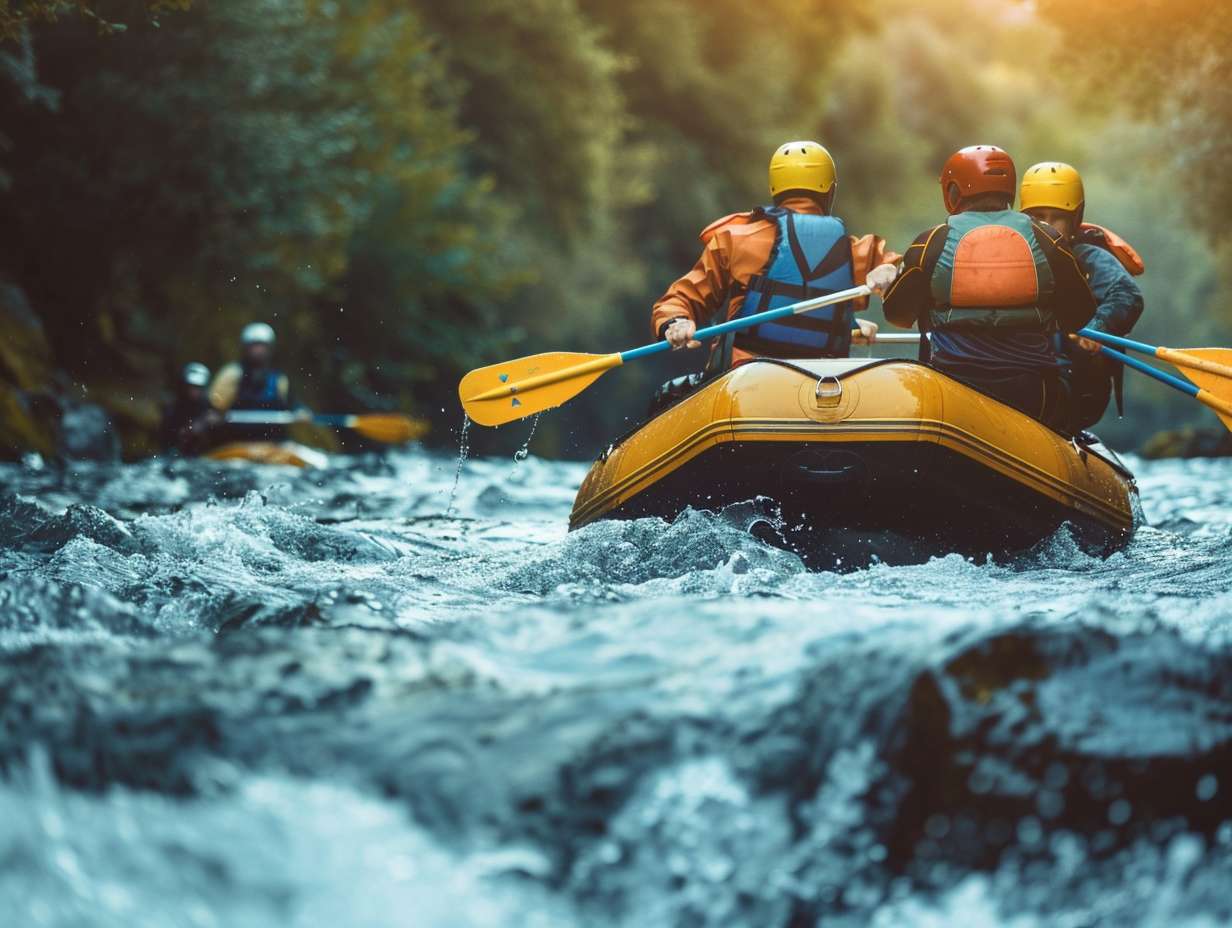
To guarantee a safe and enjoyable rafting experience, always adhere to essential safety tips while on the river. Remember, safety should be your top priority when floating the waters. Here are some critical safety tips to keep in mind:
| Safety Tips | Description | Importance Level |
|---|---|---|
| Wear a Life Jacket | Always wear a properly fitted life jacket | High |
| Listen to Guide | Follow instructions from your rafting guide | High |
| Stay Hydrated | Drink plenty of water to avoid dehydration | Medium |
| Avoid Standing | Remain seated in the raft at all times | High |
Choosing the Right Rapids
Make sure you select the appropriate level of rapids based on your experience and comfort level for a successful rafting adventure. Rapids are classified on a scale from I to VI, with Class I being the easiest and Class VI being the most challenging and dangerous.
If you’re new to rafting, start with Class I or II rapids, which have small waves and minimal obstacles. For intermediate rafters, Class III and IV rapids offer more excitement and challenges. Experienced rafters looking for an adrenaline rush may opt for Class V rapids, known for their intense whitewater and technical maneuvers.
Campsite Setup and Etiquette
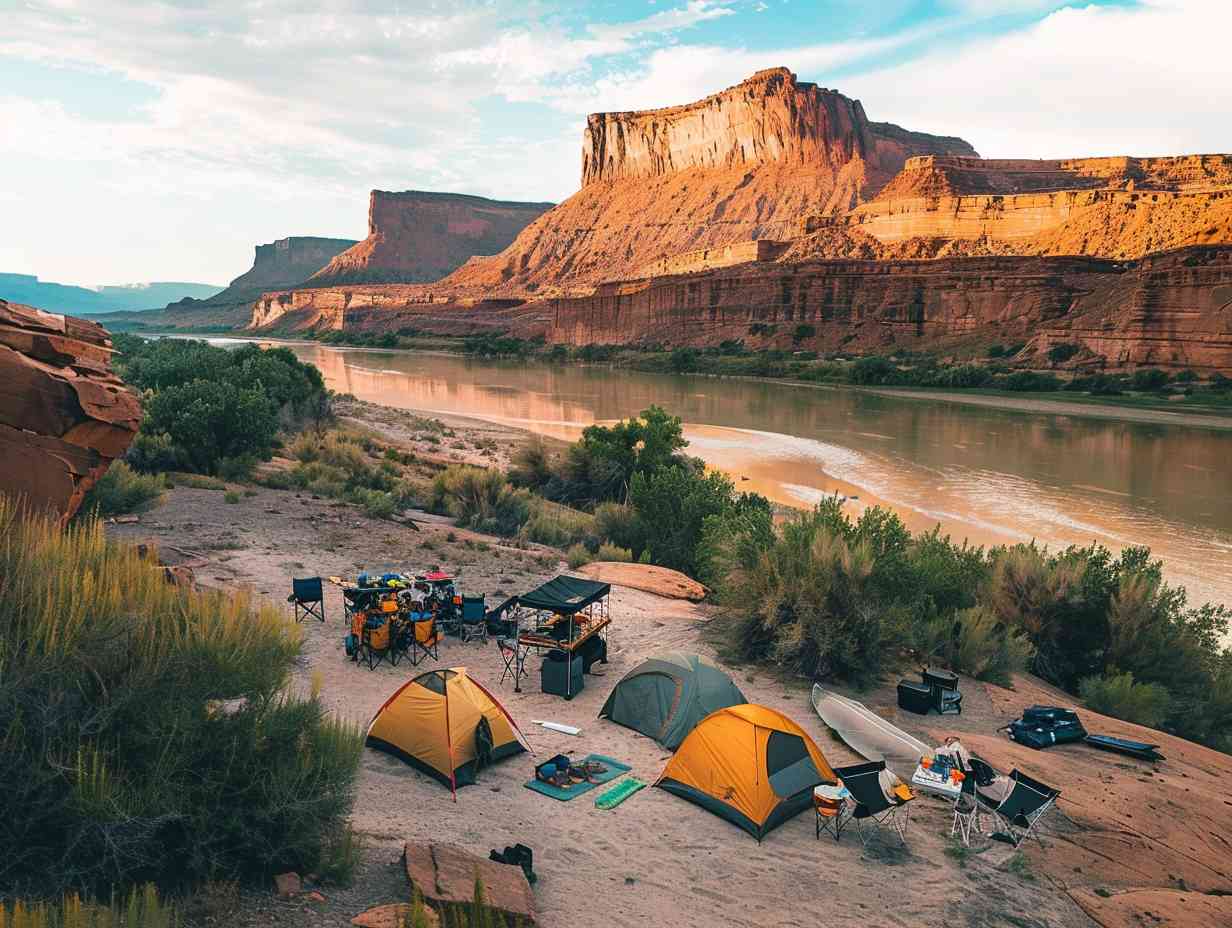
Setting up your campsite properly and following etiquette guidelines are essential for a smooth and enjoyable outdoor experience.
When choosing a spot, look for level ground and consider proximity to water sources and restroom facilities. Be mindful of other campers by keeping noise levels down, respecting quiet hours, and properly disposing of waste in designated areas.
Set up your tent away from the water’s edge to prevent flooding risks and wildlife encounters. Utilize ropes and stakes to secure your gear and avoid cluttering common areas.
Remember to leave no trace by packing out all trash and leaving the campsite cleaner than you found it. By following these simple guidelines, you contribute to a positive outdoor environment for everyone.
Emergency Procedures and Protocols
During your rafting camp, understanding and following the emergency procedures and protocols is essential for ensuring everyone’s safety. In case of an emergency, quick and decisive actions can make a significant difference. Here are some key emergency procedures and protocols to keep in mind:
| Emergency | Procedure | Protocol |
|---|---|---|
| Capsized Raft | Hold onto the raft and wait for rescue | Stay calm and follow the guide’s instructions |
| Lost Camper | Form a search party and call for help | Use whistles and flashlights for signaling |
| Severe Weather Warning | Seek shelter and follow guide’s orders | Stay away from water bodies during storms |
Frequently Asked Questions
What Are Some Common Wildlife Encounters to Be Aware of While Rafting?
While rafting, keep an eye out for common wildlife like deer, bear, and various bird species. Remember to respect their space and never approach them. Stay alert and enjoy the beauty of nature safely.
Are There Any Regulations or Restrictions on Alcohol Consumption at Rafting Camps?
You must adhere to strict regulations regarding alcohol consumption at rafting camps. Avoid bringing or consuming alcohol due to safety concerns, potential legal implications, and respect for the environment. Always prioritize responsible behavior during your camp stay.
How Do You Handle Waste Disposal While on a Multi-Day Rafting Trip?
When on a multi-day rafting trip, be mindful of waste disposal by following Leave No Trace principles. Pack out all trash, including biodegradable items like food scraps. Minimize impact on the environment by leaving nature as you found it.
Can Children Participate in Rafting Camps, and if So, Are There Any Age Restrictions?
Yes, children can participate in rafting camps. Age restrictions vary depending on the camp. Check with the specific camp for details. It’s a great way for kids to enjoy the outdoors while learning valuable skills.
Are There Any Recommended Stretches or Exercises to Prepare for a Rafting Trip?
To prepare for a rafting trip, it’s advisable to incorporate exercises like core twists, lunges, and planks into your routine. Stretches targeting your shoulders, back, and legs will help improve flexibility and strength for an enjoyable experience on the water.
Conclusion
Now that you’ve got the lowdown on rafting camp basics, you’re ready to hit the water and make a splash!
Remember, safety first and always go with the flow. So, grab your gear, paddle your heart out, and don’t forget to keep your head above water.
Before you know it, you’ll be riding the waves like a pro and having a whale of a time!
More information about Rafting Camp Basics
Affiliate information declaration: We may earn revenue from the products referred on this page and participate in affiliate programs.

